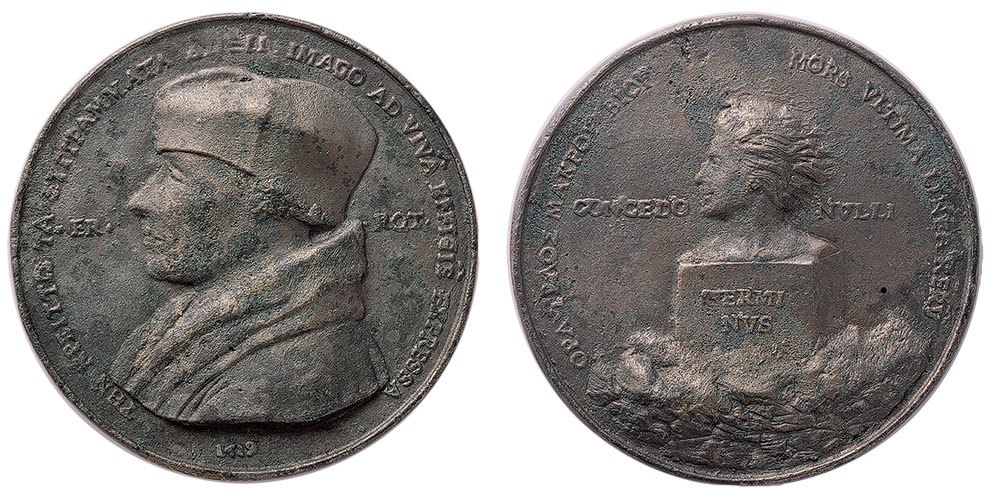
Portrait medals were a form of portable sculpture popular in the Renaissance. Erasmus commissioned the design for this large and impressive medal from the Antwerp painter Quentin Metsys, who combined Erasmus’s likeness with that of his emblem, the Roman god Terminus. Attired in a cap and collared robe, Erasmus appears in profile, as if on an ancient coin. The surrounding inscription relates to the long-standing humanist debate about the respective merits of images and texts. It asserts that although the portrait is “from life,” and therefore reliable, Erasmus’s writings provide a truer representation of the author.
Seen in profile, facing into the winds of adversity, Terminus aligns with Erasmus’s portrait on the obverse. In Christian thought, Terminus was associated with the boundary between life and death. Turning the medal over, from the portrait of Erasmus to the image of Terminus, encouraged consideration of the inevitable passage from life to death, the true terminus.
Quentin Metsys (1465/66–1530), designer
Portrait Medal of Erasmus of Rotterdam (obverse), 1519, cast ca. 1524
Bronze
Inscribed around the perimeter, in Greek and Latin: His writings will give a better picture: His portrait taken from life.
Historisches Museum Basel; 1916.288
Quentin Metsys (1465/66–1530), designer
Portrait medal of Erasmus of Rotterdam, with Terminus (reverse), 1519, cast ca. 1524
Bronze
Inscribed around the perimeter and center, in Greek and Latin: Look to your end, however long your life—death is the final boundary of things.
Historisches Museum Basel; 1916.288
